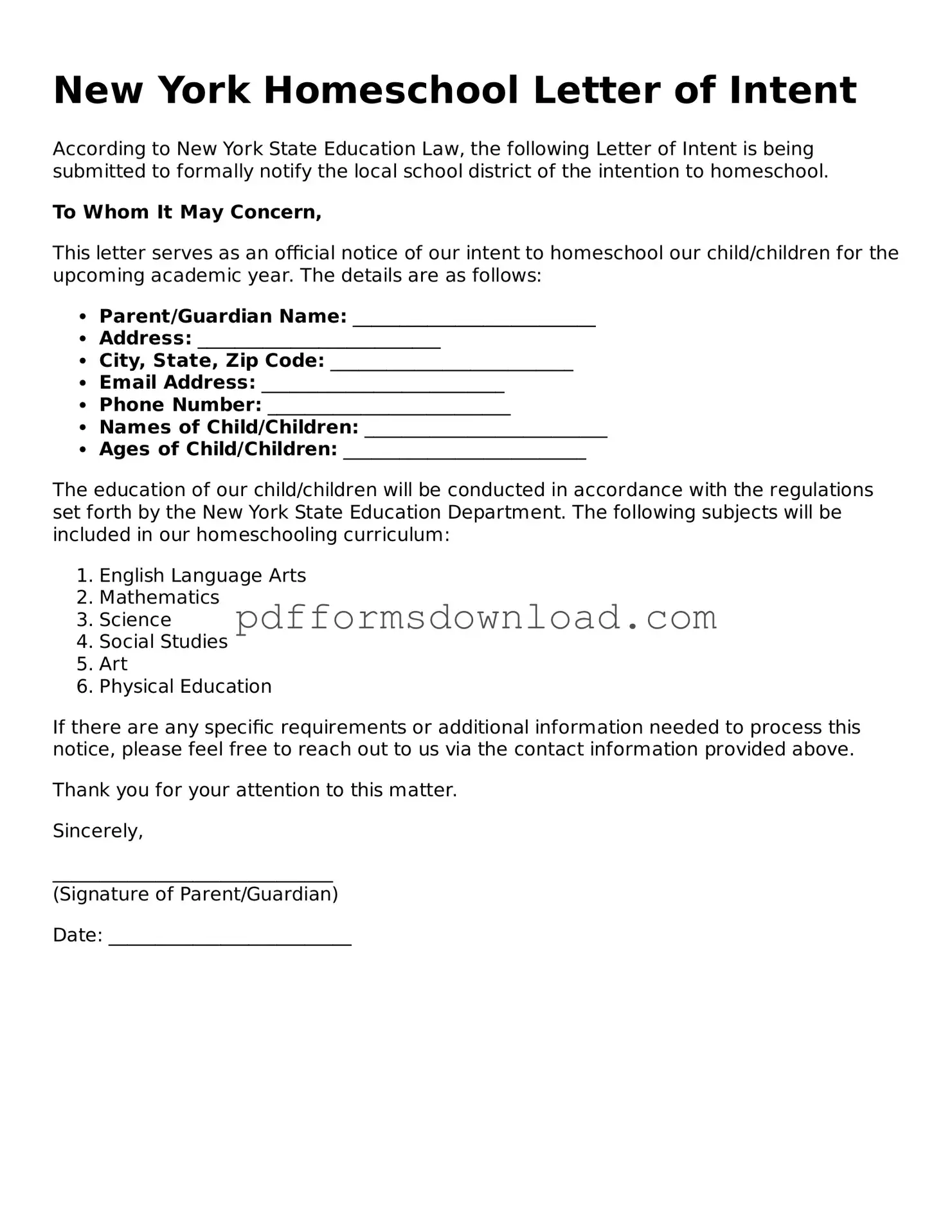Printable New York Homeschool Letter of Intent Form
The New York Homeschool Letter of Intent form is a crucial document that parents must submit to formally notify the state of their intention to homeschool their children. This form serves as a declaration of the educational approach chosen by families, ensuring compliance with state regulations. Completing this form is an important step in establishing a homeschooling program that meets legal requirements.
Fill out the New York Homeschool Letter of Intent form today by clicking the button below.
Make This Document Now
